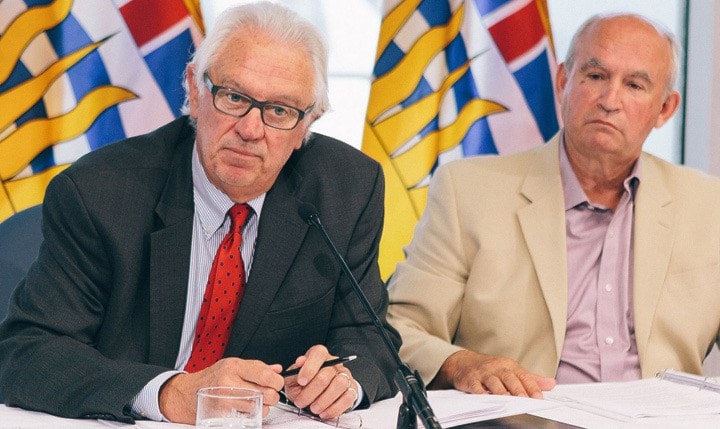The latest changes to B.C. mine regulations bring the province closer to its goal of preventing another tailings pond failure, says an independent expert who investigated the 2014 dam breach at Mt. Polley Mine.
Dirk van Zyl, professor of mining and the environment at the University of B.C. and one of three outside reviewers of the Mt. Polley failure, said the changes to B.C.'s Mining Code meet the recommendations made by engineers who examined the failure.
"These changes put B.C. in a leadership position and clearly set the groundwork for a more comprehensive approach to consistent tailings management in the province," van Zyl said in a statement Wednesday. "It is another step towards the overall goal of moving to zero tailings storage facility failures."
Energy and Mines Minister Bill Bennett said the changes to construction, water management and inspection can't be expected to prevent every small release of water from a mine tailings pond in heavy rainfall. But he is confident the new regime will prevent major failures, even when unknown factors such as the weak layer under the Mt. Polley dam exist.
"Now we are prescribing a factor of safety that I think will account for the things you don't know," Bennett said.
Al Hoffman, B.C.'s Chief Inspector of Mines, said the new code has specific requirements for inside "beaches" to reduce pressure on the base of a tailings dam, the height of water allowed, the number of motion detectors on the dam and the frequency of inspections.
The new code requires every existing B.C. mine with a tailings pond to have an independent tailings review board in place by the end of 2016, with annual reports to be posted online.
That falls short of a recent recommendation by B.C. Auditor General Carol Bellringer that mine oversight should be independent of the ministry that issues permits and promotes mining investment. Bennett said he remains convinced that the technical nature of permits with hundreds of conditions makes the people who issue them the best qualified to enforce them.
NDP energy and mines critic Norm Macdonald said Mt. Polley was required to have supporting beaches and went for years without them, and also reported its water levels incorrectly before the dam failure. New rules will only make a difference if they are enforced, Macdonald said.
The Mt. Polley independent report concluded that a a layer of glacial till material at the base of the dam near Williams Lake wasn't understood in enough detail when the dam was designed and built in 1997. Later raising of the dam to hold more water and tailings put pressure on the base layer and led to the failure.
The B.C. Conservation Officer Service continues its investigation of the Mt. Polley incident, and has authority to recommend charges for the environmental damage done by the failure.
The Mt. Polley dam has been repaired by owner Imperial Metals and the , with work continuing to rebuild Hazeltine Creek and the shore of Quesnel Lake where a torrent of water and tailings poured down on Aug. 4, 2014.


